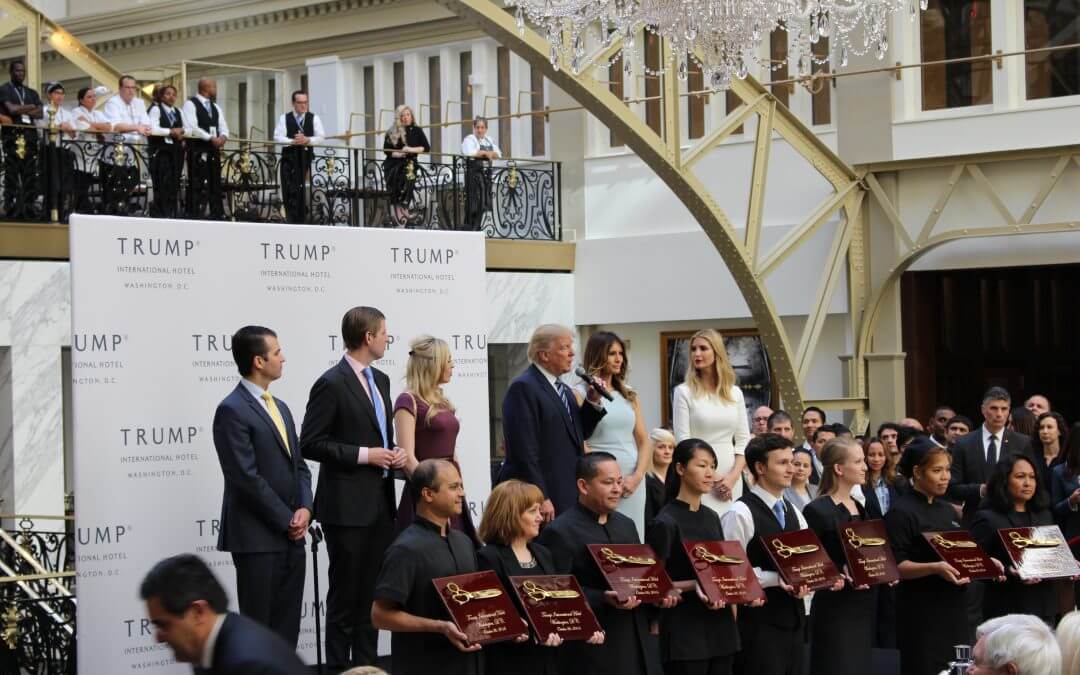With Election Day nearing, the major party candidates have set the themes for their campaigns: Republican Donald Trump calls himself the tough-on-crime, law-and-order candidate, while Hillary Clinton paints herself as the reform-minded Democrat working to make inroads with minority communities.
The ideas are mirrored by their supporters. In late October, Clinton earned the endorsement of leading Black Lives Matter activist Deray McKesson, while Trump touts the support he has received from local and national police unions.
“Obama and Hillary Clinton have done nothing,” said Steve Loomis, President of the Cleveland Police Protective Association, which endorsed Trump. “Trump is going to support law and order.”
Yet criminologists suggest that Trump’s proposed policies – stop-and-frisk, militarized police, and more police officers on the streets – could actually make crime worse. The latest evidence for why crime is rising modestly points to deteriorating community relations. The Republican nominee’s policies may only exacerbate already inflamed tensions, critics say.
According to the latest FBI Crime reports, homicides rose 10 percent and violent crime rose 4 percent in. In early October, criminologist Richard Rosenfeld of Washington University in St. Louis released a Justice Department report that found just a handful of cities were driving the national rise in crime rates.
In his report, Rosenfeld concluded that, based on the timing of the rise in crime rates, either viral videos of police shooting black men had eroded the trust between black communities and law enforcement, making citizens less likely to report crimes to the police, or police themselves have withdrawn from communities out of fear of public criticism. The controversial twin theories are sometimes labeled the “Ferguson effect,” after the August 2014 shooting by police of unarmed teenager Michael Brown in Ferguson, Missouri.
Trump has promised law enforcement unions that he will accelerate the flow of military equipment to police departments, jumpstarting a 1997 program that drew sharp criticism when armored and assault-rifle armed police officers appeared at protests of police shootings. He has promised to undo President Barack Obama’s executive order that limited the program.
Research suggests the original militarization program reduced crime, said Nancy La Vigne, a senior policy analyst at the Washington-based Urban Institute. However, La Vigne and other experts argued that reduction might not be enough to overcome the adverse effect militarized police have on relations between police and minority communities.
“It’s hard to have trust-building conversations when you’re pointing guns at people,” said David Sklansky, a Stanford Law School professor who specializes in law enforcement issues.
Although military-style equipment may be meant only be for emergencies, Slansky said departments use the gear whether it’s needed or not. The goal, he said, should be better-trained police officers – not more personnel and equipment.
She pointed out that homicides in New York City fell after NYPD stopped the program as police-community cooperation rose.
But former New York Mayor Rudy Giuliani, a top Trump surrogate, has insisted stop-and-frisk was effective.
“It helped to change New York City from the crime capital of America to the safest large city in the country,” he wrote in a September Wall Street Journal op-ed.
Former Secretary of State Hillary Clinton is in favor of expanded background checks for gun purchases, as well as efforts to keep guns away from the mentally ill and domestic abusers. However, Rosenfeld said those changes would also have little impact on crime.
“We might see modest reductions [in crime], but my sense is they would not be large reductions,” Rosenfeld said. “The proposals Secretary Clinton has made are themselves fairly modest.”
The merits of the two candidates’ proposals, however, may be inconsequential in an election cycle seldom dominated by policy. A March Gallup poll shows concern about crime is at a 15-year high – up 10 percent from 2015. But non-whites were most likely to express concern — and many black voters see Trump’s law-and-order message as targeted specifically against them.
The New York billionaire borrowed the phrase from Richard Nixon, who used the same mantra in 1968. Historians largely regard that strategy as stoking white resentment against African American and other minority protest movements.
“‘Law and order,’ that’s been a dog-whistling phrase of the right wing for decades now,” said Sean Blackman, 28, an organizer for Stop Police Terror Project DC. “When Nixon said ‘law and order’ he meant specifically cracking down on brown people, red people, yellow people.”
Michael Barone of the conservative American Enterprise Institute, said in an email that the crime issue is important for any large block of voters. But he said it “could help Trump marginally, perhaps in suburbs of Milwaukee, St. Louis, etc.”
For Stephen Loomis, though, it will be the most important issue. Crime is up, the Cleveland police officer said, and money for policing is down. And there’s only one candidate who can fix it.



